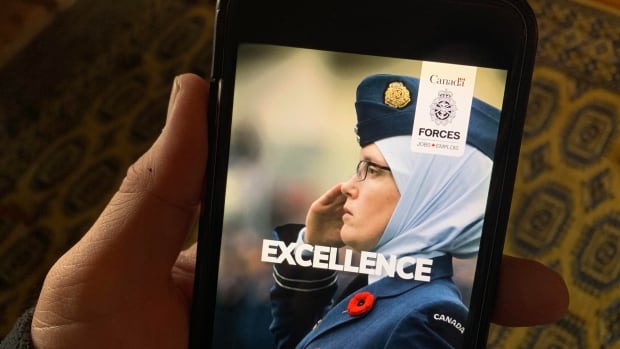
Viola Davis didn’t approach The Woman King like just another film.
The Oscar winner took on the role of Nanisca, a general of the true-to-life all-women Agojie warriors, while also producing the film alongside her husband. But as it followed a little-known story in an African kingdom — fronted by a cast of nearly all-Black actors — Davis says it was nearly impossible to get a studio to buy in.
“It’s never been done,” she said on a red carpet ahead of the film’s world premiere at the Toronto International Film Festival.
“You can be a little bit afraid of something that’s never been done. But sometimes things that have never been done, it doesn’t mean that it’s not gonna land.”
Since then, the film has landed — picking up nearly $2 million US in previews before it even opened theatrically on Friday. And with it so too have the concepts of afrofuturism, reimagined Black history and casting Black people and culture as something to be looked up to and even emulated — instead of victims of slavery struggling to simply prove their equality.
Viola Davis describes the years-long effort to make The Woman King, and her co-star John Boyega jokes about the pressure of acting opposite Davis.
And as far as TIFF goes, The Woman King was far from alone.
The world premiere for Chevalier saw Kelvin Harrison Jr. introduce the criminally little-known story of Joseph Bologne — a Black fencer, violin virtuoso and masterful classical composer who rivaled Mozart, and whom John Adams, the second president of the United States, called “the most accomplished man in Europe.”
A world premiere for Sidney tells the story of Sidney Poitier, described in the TIFF synopsis as “one of the most gifted and charismatic actors the cinema has known.” Dear Mama‘s world premiere looks at rapper Tupac and his mother Afeni Shakur, and attempts to reshape the story of both their contributions to the civil rights movement.
And also receiving its world premiere was Black Ice, the Drake-fronted documentary — featuring Black Canadian NHL superstars P.K. Subban and Akim Aliu — that both highlighted the often-ignored contribution of Black athletes to the sport (including the introduction of the slapshot) and the racism they continue to face.
“It’s literally Canada’s sport, and we don’t know that Black people had all these contributions,” Aliu told CBC on his red carpet. “I just hope this empowers people to look beyond this and lift up the hood and say, ‘Hey, what other contributions have people of colour had to our society,’ and they’re going to quickly find out that we’ve been integral to where we are today.”
Kim Fain, an English professor at Texas Southern University and author of Black Hollywood: From Butlers to Superheroes, the Changing Role of African American Men in the Movies, pointed to to all these movies as more than a coincidence. They’re the result of changing trends in Hollywood, that itself is a reflection of the way society deals with — and understands — how we frame history.
“Hollywood is reflecting the activist movement,” Fain said, pointing to social justice movements like Black Lives Matter and afrofuturism, a literary genre that puts Black people and culture at the forefront of science and technology.
“When you have a Black writer, you have a Black director, you have people saying, ‘No … we’re going to highlight the Black people who contributed in this way. And we’re going to show you things in a way that you haven’t seen before,'” she said. “We might revisit stories, but then we say, ‘Wait a minute, we’re going to tell it our way and re-centring Black people as they should be centred in these stories.'”
Reimagining of Black world history
While The Woman King does not fall under the umbrella of afrofuturism — which, as its name suggests, often looks into a real or imagined future — Fain pointed to Black Panther as the catalyst for the genre’s entry into the mainstream. That film put a fictional African society at the forefront of modern technology, and portrayed a a nation run, and inhabited, by Black people as a world power.
While that way of presenting a Black community is in no way inaccurate — either historically or in modern-day — Fain says, until recently, it was rare to see in the mainstream. In the early days of Hollywood, Black characters and actors were largely invisible, and when they were seen were depicted as either “slaves, butlers or maids.”
That subservient role eventually evolved into the “blaxploitation” movement of the 1970s, which shifted to show Black people as protagonists in films — though often through participating in crime.
From there, Fain said, a trend of Black actors fighting back against oppression evolved into a “white saviour” trend — where a Black character is seemingly the lead, though really shown as being saved by a white character, as in Green Book, The Blind Side or The Help. And from there, another trend emerged: “trauma porn,” a genre seen most notably in 12 Years a Slave, Antebellum and The Underground Railroad, where the focus is on Black characters suffering through the horrors of slavery or police brutality.
“Everything that seemed to be coming out for a while was not necessarily showing us as heroes, but showing us as victims,” Fain said. “It almost … retraumatizes us, culturally and individually.”
As new film and TV projects explore the history of the transatlantic slave trade, including the new documentary series Enslaved, a historian finds Canada’s role in these stories tends to be one-dimensional and positive.
More recently, Fain said, Black creators like Ryan Coogler and Jordan Peele have been able to take power behind the scenes, and make movies where Black people take control of their own stories.
That movement extends even beyond movies like The Woman King, that purposefully put a Black cast front and centre, to another movie at TIFF that subverted tropes in a less intentional way. Devotion — which, once again, had its world premiere at the festival — told the story of Jesse Brown, the first Black aviator to pass the Navy’s basic flight training program, who was killed in the Korean War.
While it still told the story of a Black man struggling against a racist system while befriending a white officer who attempts to help him, star Jonathan Majors (who portrayed Brown) says he took on the role specifically because the script showed Brown helping himself — instead of relying on an outside saviour.
Devotion star Jonathan Majors speaks about the importance of Black people being at the centre of their own stories and Joe Jonas talks about joining such an important project.
“We have been depicted in many ways. Infantilized, you know, in ways like, ‘Oh, we can’t help ourselves.’ No, we can help ourselves,” Majors told CBC News. “We’ve got Jesse Browns that prove we can help ourselves. We got Nat Love’s to prove we can help ourselves. We’ve got Chadwick Boseman’s that prove we can help ourselves. That’s the movement.”
But even as the depiction of Black people improves in media, there’s more to be mindful of. Cheryl Thompson, Canadian researcher of Black performance art, says that while focusing on the contributions and stories of Black people is good, it shouldn’t come at the expense of highlighting the continued struggles of Black people.
“It’s sort of a mirage. All [this] amazing Black storytelling,” she said. “We’re finally being seen as kings and queens, but then in reality, when you look at America major issues, they just don’t match up with the silver screen narrative.”
That, she warned, is something filmmakers will have to balance as the power and influence of Black storytelling continues to grow in Hollywood.










